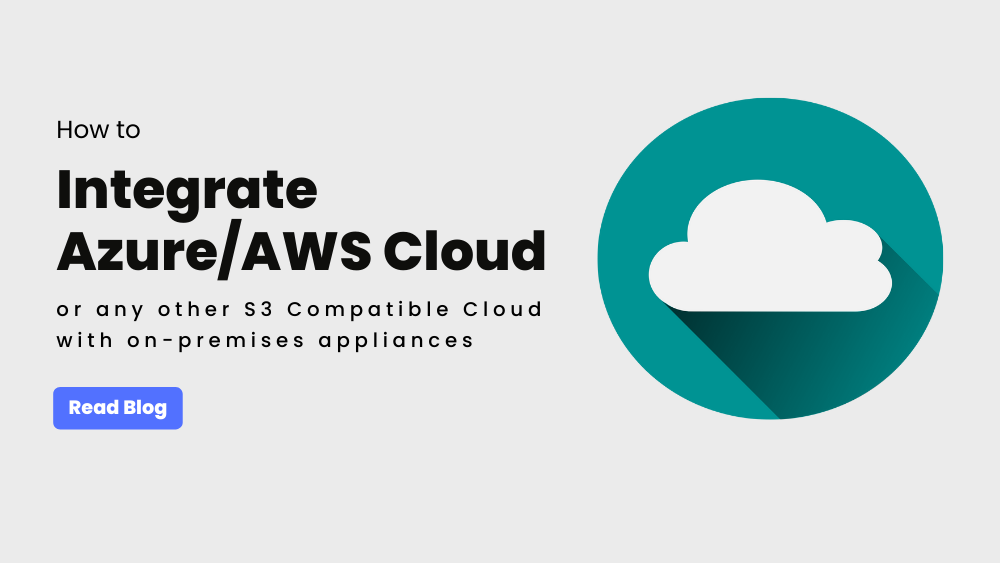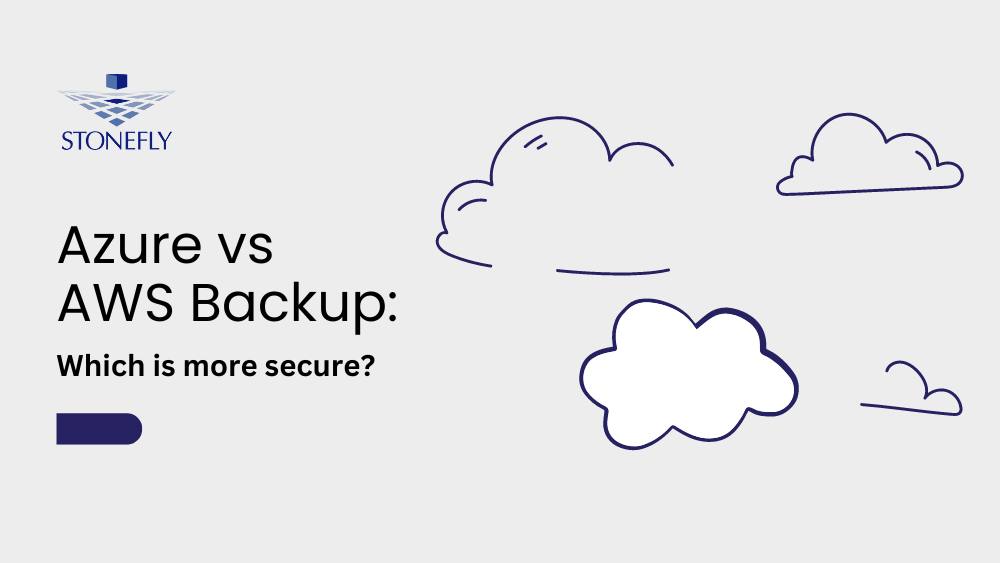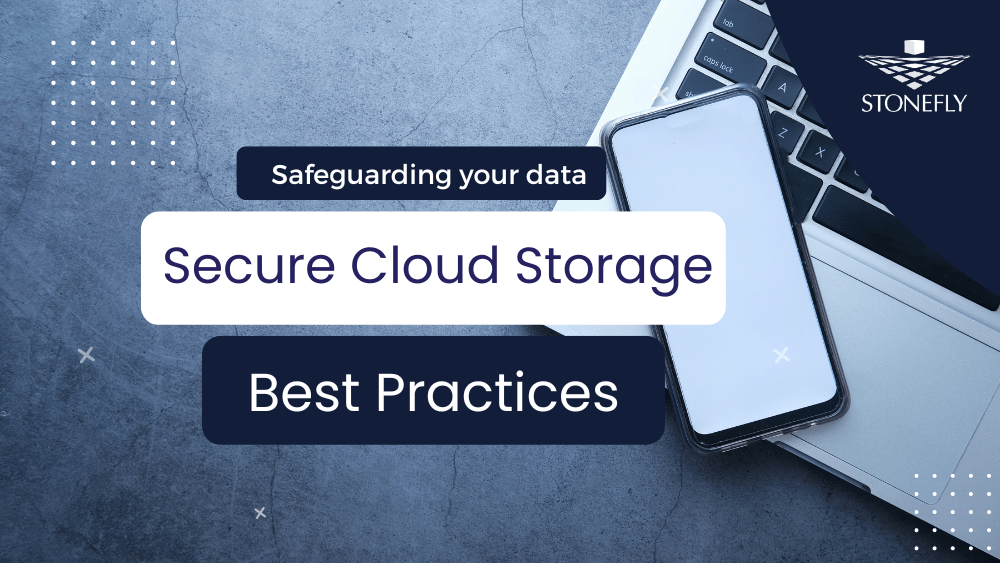Data is the lifeblood of any business. Companies spend countless hours and resources to keep data secure, backed up, and available for employees at all times. Cloud backup is an essential part of this process as it provides protection against hardware failure and natural disasters.
However, there are many different types of cloud backups that can be used in conjunction with one another to provide a comprehensive solution tailored to your needs – from on-premises hybrid solutions like StoneFly DR365V and miniBackup to cloud backup services like Veeam Cloud Connect, and StoneFly CDR365 that combine public cloud storage with private infrastructure.
We’ll discuss these various types of online backups below including their benefits and costs so you can decide which option best suits your needs!
What is cloud backup?
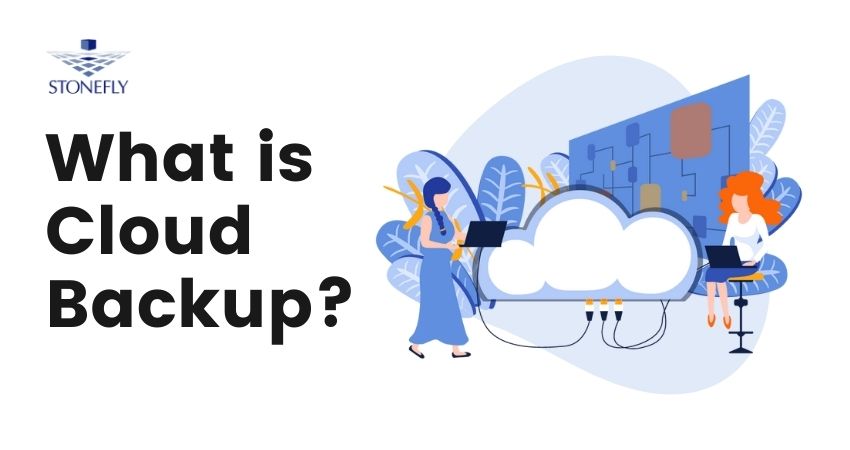
The central idea behind cloud backup is to store your data in an off-site location that isn’t accessible by you or other people, and only accessed by an automatic backup server.
The data is saved to the storage from multiple locations in your home or office and uploaded over a network connection to the cloud service provider’s datacenter for processing and storage.
After completion, you have disk image copies of all of your data stored offsite (typically at least once per day), allowing you to restore files if disaster strikes your business or personal computer. If there are no problems with your setup, then you can rest assured that even if someone hacks into your machine they won’t be able to steal any of your sensitive information since it’s not actually stored on the physical hard drives installed inside it.
Currently most consumers would use this as protection against events such as theft or natural disasters, but there are also scenarios where a small business would wish to use online backup as well.
Cloud backup is an easy and affordable way to get your data offsite. Since the cloud providers have a number of datacenters distributed around the world, they can be used by companies that have compliance requirements for storing backup media within a specific geographic locale.
Cloud backup is also a good option for small businesses that don’t have the budget to purchase their own disks or servers.
What is the difference between cloud backups, cloud storage, and syncing services?
Cloud backup services work by copying the data from your on-premises storage to an off-site location. The on-premises storage can be any number of infrastructure including a computer’s hard drives, physical/virtual servers, external disks, flash media and more.
A cloud storage service is similar except it doesn’t offer the automatic syncing features that you get with a backup service. These are designed for people who need a large online space to store their photos, videos, documents and other files but don’t plan on using them as replacement backups. Services such as Amazon Cloud Drive and Dropbox offer online storages that provide access to your data anywhere you have an internet connection instead of only providing copies stored in the provider’s datacenter.
Syncing services work by linking two online storage locations—your physical/cloud server and an online service. Instructions from one site are sent to the second, so when you make a change on your system it’s reflected everywhere else.
Why do you need cloud backups

According to the Washington Post, global losses from cyber-crime were estimated at nearly $1 trillion in 2020.
In the US alone, individuals and businesses are responsible for a total of $18 billion worth of data loss each year. That number is projected to grow by 44% over the next five years as more people use consumer technology with cloud storage solutions at home. Only 23% of small businesses back up their data on a regular basis. It’s easy to see that having a backup solution in place is essential for protecting your valuable information against catastrophe.
If you’re using cloud-based storage you should be making backups regularly no matter what type of service you choose to go with! Cloud backup services are convenient but they aren’t infallible. From time to time there have been massive outages where hundreds or thousands of users suddenly find themselves without access to their files on a specific provider.
Cloud backup services are usually known for providing high availability. They often use a form of continual replication, where changes to files can be sent out instantly over an encrypted connection and will either upload using a background process. This means that it typically won’t take any more time to perform a backup than it does without using an online backup solution.
Benefits of using a cloud backup service
The main benefit of using a cloud backup service is that you can quickly and easily replicate your data to an offsite location. You are also able to restore files from the services in case of any sort of disaster such as losing access to your server, virus infection, or ransomware attack.
Small businesses will have an additional concern in that they need to store some of their files outside of the United States due to compliance reasons.
Cloud backup services will typically offer some sort of bandwidth quota that you are allowed to use for uploading your files, meaning that you don’t have to worry about any additional charges beyond what you used for storage space and data transfer costs.
How do I backup to the cloud?
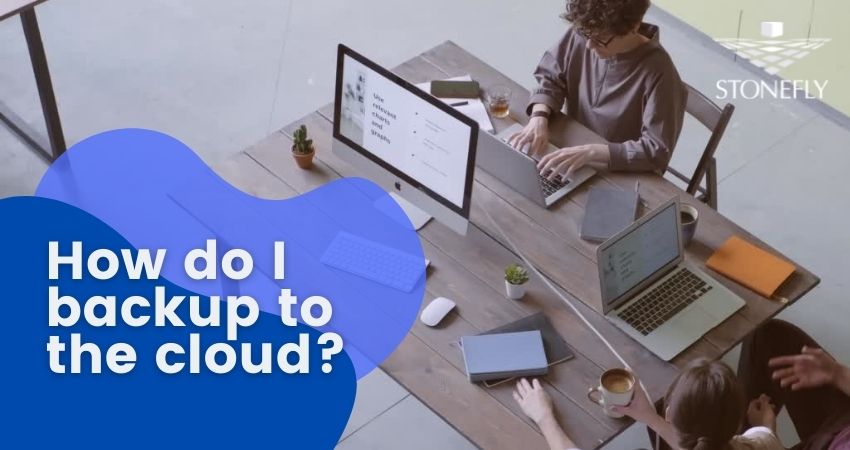
There are several different ways to backup data to the cloud. The most common way is by using a program that can detect changes to your files and then upload them via the internet.
Another option is a third-party application that encrypts your files before uploading them. This type of solution is more secure because it protects both against internal threats like employee theft but also external ones like hackers trying to penetrate your connection directly or using malware that captures information directly from your machine’s hard drives after they’ve been stolen.
The most important thing is to choose a cloud backup solution that matches your needs exactly. If you have all of your old tax returns stored in an ancient Microsoft Excel format, you should be looking for a provider that supports old Microsoft file formats. In addition, if you deal with lots of sensitive data it’s best to use end-to-end encryption with your online backup service.
In addition, you should try to choose a provider that is able to support the size of your data and will provide fast access. Some providers can recover large amounts of information very quickly, but if you have lots of small files you may be better off using a provider that provides unlimited storage space rather than one that charges by the gigabyte. This way you always pay a flat monthly rate and don’t have to worry about paying for overages or limiting how much you back up due to limited file sizes during the course of your subscription period.
Sometimes it’s not possible to use an online service because there are regulatory compliance regulations in place that mandate where backup media must be stored (for example, health care organizations must keep backup media on-site). In these situations it’s possible to use a cloud backup service that lets you send physical storage devices and then have them shipped off in the event of catastrophic data loss.
Most users opt to just download the client software for their operating system, install it when prompted, and then set up automatic backups using the program’s own settings. This way you don’t need to be constantly backing up files manually, although some people prefer this method due to privacy concerns with storing information online. The biggest danger is forgetting about your backups because remembering to make regular updates is essential for keeping data safe.
How can I restore my data from the cloud?

Restoring a broken hard drive or recovering files from a server with malware is always a challenge. Cloud backups, however, are usually much easier to recover since you’re just accessing your information from the cloud and media with your own private encryption keys.
Instead of restoring data from an external hard drive, you simply connect to the provider via an encrypted connection and download the files that you’re looking for.
Many providers allow users to periodically designate what types of files they’d like backed up so that they can get automatic access without having to use dedicated backup programs or go through online interfaces. Some also offer personal assistants who will help transfer data over a secure internet connection. This kind of assistance is extremely important you have lots of sensitive data and want to keep it protected.
How to make sure your data is secure and backed up properly?
Although your data is stored on servers that are very secure, the most important thing to do in order to keep it protected is to regularly backup your files. This way if a hard drive fails or you accidentally delete an essential file, access will be quickly restored. For this reason it’s important to choose a provider with quick recovery options and customer support.
To protect your data even further, you can sign up for cloud backup software packages that encrypt everything before sending it off. Since the information is sent in an encrypted format, nobody will be able to read your data unless they have permission from you or the encryption key.
How much does cloud backup costs?
Online backup is usually a flat monthly rate, though there are also providers that charge based on the amount of storage space used. When choosing a provider it’s important to consider these factors and carefully compare different options. Many online backup services offer free trials so that you can try out the service before investing in your own account.
Cloud backup is also an investment in your own data security because you’re giving yourself a redundant backup that can’t get lost, stolen, or damaged.
What is the best cloud backup service?
While online backup services have become increasingly popular in recent years, they can still be difficult to understand. If you want to learn about online backup providers and their features, we recommend going online and typing “top online cloud backup service reviews” into any search engine.
Choosing the best online backup provider depends on a number of factors, including whether or not you want to be able to restore files from multiple devices, how much storage space you need, what types of file formats your data is stored as (for example .docx vs. .ppt), and whether or not you need backups at more than one location.
For those who are looking for a good online backup service, you have to first figure out what you’re looking for. If you need hundreds of gigabytes online but want unlimited storage space, many providers even offer unlimited online backups without any limits. This is a good option because you aren’t restricted to what online backups can offer and you’re able to transfer as much data as you need.
Conclusion
Data protection is a very real concern for business owners. The threat of data loss from human error, hardware failure, and ransomware can be eliminated with cloud backups.
Cloud backup ensures high availability while protecting your data seamlessly. Cloud backup services offer instant backups that can restore files in minutes- even if they’ve been encrypted by malware like WannaCry. And, because there is no need for tapes or other physical media on site, it reduces your risk exposure significantly!
Looking to set up reliable online backup services? Get a free trial for StoneFly CDR365 today and test out the backup solution for 30-days.







